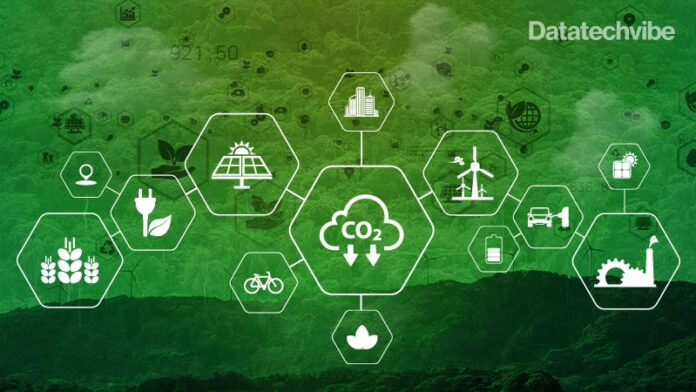In 2020, Microsoft announced that it would be carbon negative by 2030. By 2050, the technology company declared that it will remove from the environment all the carbon the company has emitted either directly or by electrical consumption since it was founded in 1975.
Towards this mission, it was able to reduce carbon emissions by 6 per cent (roughly 730,000 metric tons) in the first year. The company also announced that it was working with Deloitte to audit the progress on sustainability goals.
In addition, Microsoft contracted 1.3 million greenhouse gas emissions offsets for 2021; 1.1 million mt were linked to forestry projects while a further 193,000 mt came from soil carbon sequestration projects. The remaining volume comprised 2,000 mt from bioenergy, 2,000 mt from biochar and 1,000 mt from direct air capture projects.
Carbon offsetting refers to businesses buying permits – or carbon credits – generated by projects cleaning up our atmosphere, to compensate for the emissions they haven’t yet eliminated. Think of it as an accounting metric where companies can buy a certain number of carbon credits in a market set up for the purpose. For example, in the European Emissions Trading System (ETS), each credit corresponds to a predetermined quantity of CO2.
According to Deloitte, there are two approaches to this method:
Reduction schemes cut emissions by improving processes. Think renewable energy projects like wind farms, or initiatives that involve installing solar cooking stoves or LED lights.
Removal projects absorb or eliminate greenhouse gases. They’re either nature-based – re-forestation for example – or technology-based, such as carbon capture and storage solutions.
Across industries, companies like Alphabet, Cemex, Delta, Disney, General Motors, Honeywell, Microsoft, PG&E, Salesforce, Shell, Unilever and more – use purchased carbon offsets to reach their sustainability goals.
There has been some debate about whether carbon credits are simply a convenient way for enterprises to throw money at a problem instead of changing processes to work towards decarbonising their production. Environmental advocates are worried about loopholes and tokenism. They argue that trees planted now will only begin extracting carbon from the air after seven years, and may not completely offset the required carbon for a century.
A recent KPMG report noted in a global survey that 80 per cent of companies it works with publish sustainability information, and a majority have set targets to lower carbon emissions. However, the current targets may not be enough. A United Nations report from mid-2020 found that only about 40 per cent of enterprises surveyed are convinced that their targets are ambitious enough to meet the UN’s Sustainable Development Goals by 2030.
There is a new wave where companies are focussing on technology to ensure true tracking and transparency in such green efforts.
Pachama trains machine learning models using satellite imagery, a vast network of field plots, LiDAR imaging, and other remote sensing data to identify key forest characteristics that are used to estimate carbon. When an enterprise takes on a forest project, they want to be notified of any significant changes to a project’s health, like illegal logging for example. Activities such as these could impact the company’s net-zero targets. Pachama’s forest monitoring system detects changes in carbon projects over time, and shares these insights and updates directly to offsetters and project developers alike.
To add transparency to the process, Singapore-based Poseidon is working towards bringing carbon markets on the blockchain. The company addresses the impacts of economic value chains on environmental assets through consumer-powered climate balance. It does this by analysing the carbon footprint of any product or service, and then processing carbon credits in fractions small enough to rebalance the product or service at the point of sale.
Sustainable software engineering
According to an Accenture report, enterprises can pursue a green approach by migrating to the public cloud. Based on the analysis, companies can reduce global carbon (CO2) emissions by 59 million tons of CO2 per year through cloud migration. This represents a 5.9 per cent reduction in total IT emissions and equates to taking 22 million cars off the road. In addition, greater workload flexibility, better server utilisation rates, and more energy-efficient infrastructure all make public clouds more cost efficient than enterprise-owned data centres.
Sustainable software engineering practices are important to the future of business, not just the environment. For example, Amazon’s CodeGuru machine learning service helps the company identify and act upon the lines of code that hinder application performance. From 2017 to 2018, Amazon used it to increase application efficiency, driving a 325 per cent increase in Central Processing Unit (CPU) utilisation and reducing the number of instances needed to manage Prime Day, the company’s largest shopping event of the year. Similarly, AMP Robotics launched an AMP Cortex dual-robot system (DRS) focused on material recovery in municipal solid waste, electronic waste, and construction and demolition in 2019. How it works is that AI-enabled robots sort, pick and place material. Data from each material stream is captured in the cloud and made available through AMP Insights, a visualisation tool that makes informed decisions to optimise operations. For this innovation, the company won The Ecolab Award for Circular Economy Digital Disruptor in 2019 and was the Rising Star Company of the Year in the 2020 Global Cleantech 100.
The debate about whether corporations look to carbon offsets to find loopholes and its tokenism rages on. But using new technologies to track the effectiveness of projects that work to balance the carbon footprint of capitalism and environmental conservation is sure to make the efforts more meaningful.
If you liked reading this, you might like our other stories









